Creative Flow Research Division
Spacecraft Thermal and Fluids Systems Laboratory
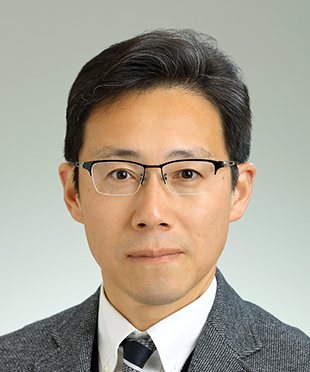
ProfessorHiroki Nagai

Assistant ProfessorTsubasa Ikami
Spacecrafts are exposed to various thermo-fluid environments during launch, space activities, and return to Earth. Especially for the development of next-generation space transportation systems, it is essential to understand the thermal and aerodynamic characteristics during atmospheric re-entry. In this laboratory, the flow field around a spacecraft in extreme environments is clarified using thermo-fluid measurement techniques, mainly functional molecular sensors. We also use computational fluid dynamics (CFD) techniques with supercomputers to extract the characteristics of the flow field structure and contribute to the design and development of the next-generation spacecraft by clarifying these unsolved problems. A thermal control system that can exhaust heat from internal equipment with limited power and weight resources is essential for the next generation of spacecraft. We are researching and developing Loop Heat Pipe (LHP) and self-excited Oscillating Heat Pipe (OHP) as non-powered heat transport devices with high heat transport capacity, lightweight, and space-saving. It will lead to breakthroughs in the realization of next-generation spacecraft missions and flexible exploration activities on planets beyond the Moon.
Understanding of aerodynamic characteristics and aerodynamic heating phenomena when a spacecraft enters a planetary atmosphere
We focus on aerodynamic heating phenomena in the hypersonic region, a problem when spacecraft enters planetary atmospheres (planets with atmospheres such as Earth and Mars), and dynamic instability phenomena related to the entry capsule it decelerates from hypersonic to transonic speeds. We visualize the spacecraft’s flow through wind tunnel experiments and ballistic flight tests. Also, we measure the aerodynamic heating and pressure distribution on the model with high accuracy using functional molecular sensor technology.
 Flow field around a free flying Hayabusa capsule at Mach number M=1.4
Flow field around a free flying Hayabusa capsule at Mach number M=1.4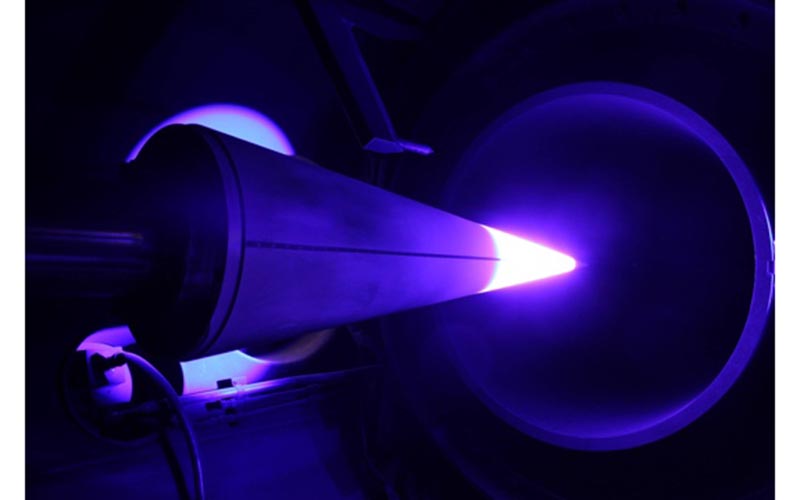 Measurement of Aerodynamic Heating to Hypersonic Flight Vehicle Using Temperature-Sensitive Paint Technology
Measurement of Aerodynamic Heating to Hypersonic Flight Vehicle Using Temperature-Sensitive Paint Technology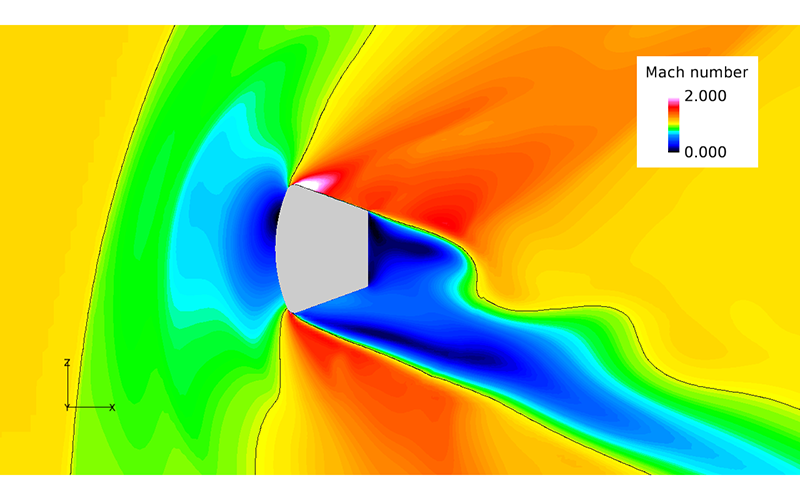 Unsteady Flow Field Analysis around HRV Capsule Using Supercomputer
Unsteady Flow Field Analysis around HRV Capsule Using Supercomputer
Thermal control devices for spacecraft using vapor-liquid two-phase flow
The increase in heat generation due to the development of electronic devices and high heat density due to miniaturization has become a bottleneck in developing space devices. To solve this problem, we have been studying LHP and OHP, which are the next-generation heat control devices using the latent heat of evaporation and condensation of vapor-liquid two-phase fluids. The LHP/OHP is expected to be installed in deep space probes where resources are limited. In this laboratory, we investigate the internal flow by numerical analysis, designing the device, and verifying it by experiments, aiming to demonstrate the results in space eventually.
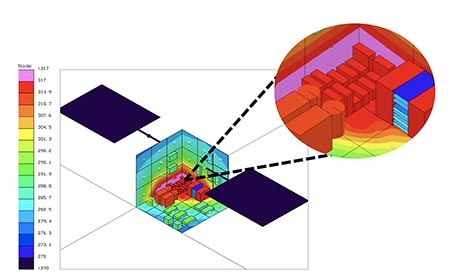 Thermal Analysis of Spacecraft by Thermal Mathematical Model
Thermal Analysis of Spacecraft by Thermal Mathematical Model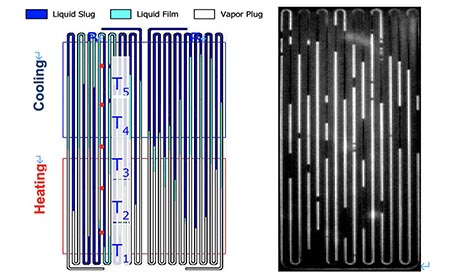 Internal flow in a self-excited Oscillating Heat Pipe (left: numerical analysis, right: experiment)
Internal flow in a self-excited Oscillating Heat Pipe (left: numerical analysis, right: experiment)
Thermo-fluid measurement technology for extreme environments using functional molecular sensors
We are researching and developing thermo-fluid measurement techniques using functional molecular sensors, such as pressure-sensitive paint and temperature-sensitive paint. In particular, we study quantitative visualization measurement and analysis techniques in extreme environments such as high and low temperatures, low-speed to hypersonic flows, and micro-regions. In recent years, we have also been challenging the quantitative measurement of pressure distribution on the surface of a supersonic flying object and three-dimensional unsteady flow field using the Background Oriented Schlieren (BOS) technique.
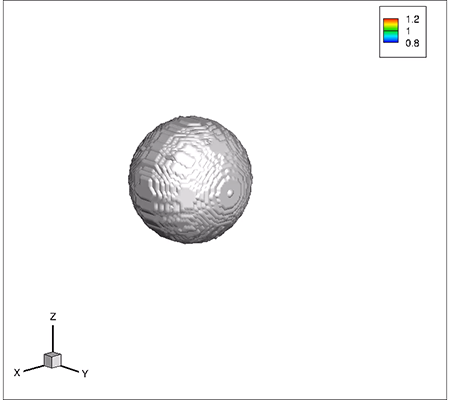 Three-dimensional density measurement of supersonic flight vehicle using BOS method (in collaboration with Chiba University)
Three-dimensional density measurement of supersonic flight vehicle using BOS method (in collaboration with Chiba University)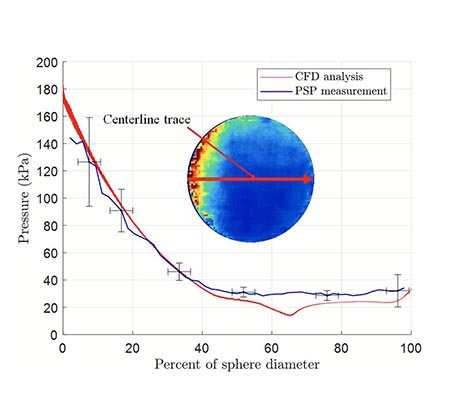 Measurement of the surface pressure field of a supersonic flight vehicle using PSP measurement technique (in collaboration with University of Notre Dame)
Measurement of the surface pressure field of a supersonic flight vehicle using PSP measurement technique (in collaboration with University of Notre Dame)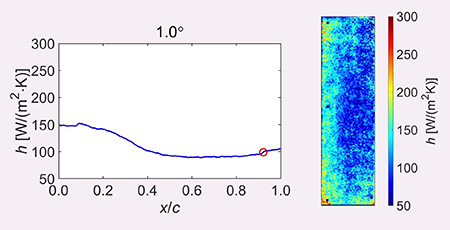 Unsteady heat flux distribution over a pitch-moving NACA0012 airfoil surface using cntTSP measurement technique (in collaboration with DLR, Germany)
Unsteady heat flux distribution over a pitch-moving NACA0012 airfoil surface using cntTSP measurement technique (in collaboration with DLR, Germany)
A New Planetary Exploration System Using Aircraft
We have proposed using aircraft such as airplanes and helicopters for a new exploration platform of planets with an atmosphere. We focus on the research and development of the following: 1. Development of high-performance fixed/rotation wing system for low Reynolds number region and elucidation of its flow field, 2. Development of an active-controllable flexible-membrane wing system, 3. Creation of new planetary exploration missions and probes using a conceptual design technique. We are collaborating with the Japan Aerospace Exploration Agency and other Japanese universities to develop the Mars airplane. We will conduct a flight test of the Mars airplane at a high altitude of Earth and demonstrate its feasibility. The final goal of our study is a realization of the “planetary locomotion,” i.e., the proposal of new planetary exploration systems which utilize a fluidic force for all the planets that has an atmosphere.
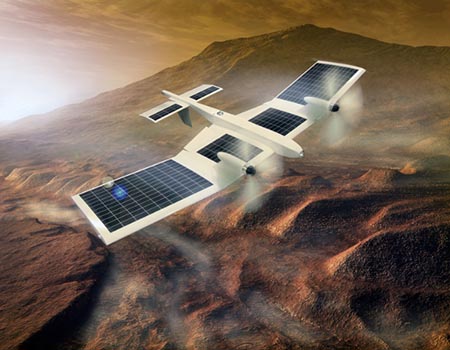 © JAXA Japanese Mars Airplane
© JAXA Japanese Mars Airplane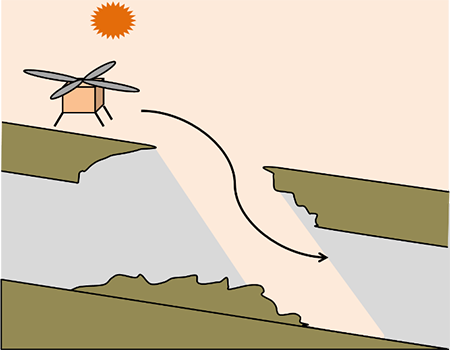 Mars Vertical Hole Exploration by Helicopter
Mars Vertical Hole Exploration by Helicopter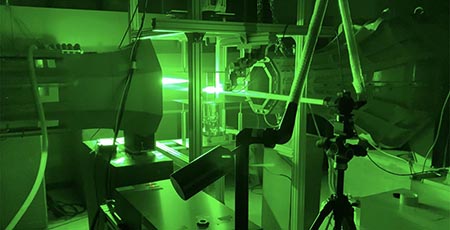 Unsteady flow field measurement around an airfoil in low Reynolds number flow
Unsteady flow field measurement around an airfoil in low Reynolds number flow
- メモ:画像参照元 http://jda.jaxa.jp/result.php?lang=j&id=9a1b0889d29e09e5b60e455558548635 著作権フリーヘリ縦穴探査画像.pptx 風洞実験風景_山本.mov
